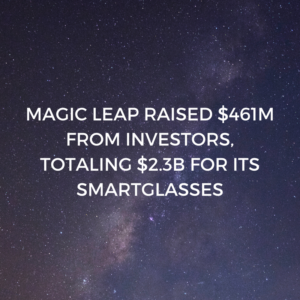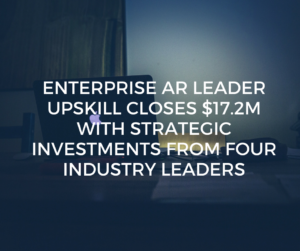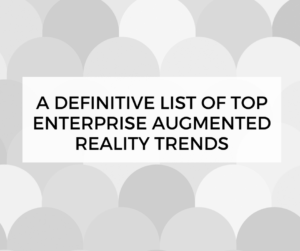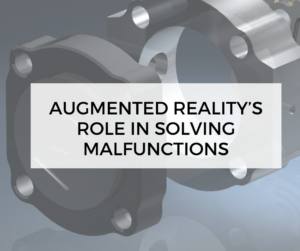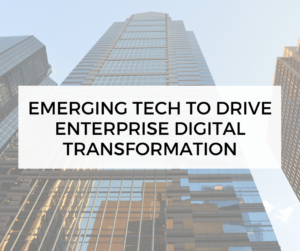This article on enterprise AR trends was authored by Brian Ballard, CEO of Upskill, and member of The AREA and appeared on IoT Agenda Network.
If the record-setting growth of AR/VR technology at the Consumer Electronics Show is any indication, we are in for an exciting year for augmented reality in the enterprise. But as with any fast-evolving technology, it is challenging to differentiate hype from reality (no pun intended) — especially when everyone is eager to weigh in on the road ahead. To make sense of this noisy, yet exciting, market, my team at Upskill and I have sifted through the countless AR predictions out there and compared them to what we are seeing and hearing from our customers and partners. The result is a definitive list of the top five enterprise AR trends for 2018. Here’s what you need to know:
Prediction #1: Enterprise AR will become essential to the creation, delivery and service of the world’s best-known brands.
We are now seeing competitive pressures for greater brand differentiation, faster time-to-service and first-time quality as the biggest drivers of AR adoption in nearly every step of the supply chain. Use cases are emerging throughout the product lifecycle that are impacting large, consumer packaged goods companies — not just manufacturers and heavy-duty service organizations. In fact, Gartner predicted that AR will be adopted across multiple business lines in 30% of large enterprises by 2020. The operative piece here is not the percentage, but rather the prediction that AR will be deployed across organizations as part of a broader digital transformation strategy. We should finally see large enterprises moving out of “pilot purgatory” and scaling their deployments into new areas that deliver even greater ROI.
Prediction #2: Service and logistics will take pole position in the race for broad adoption of AR.
While the use of AR in manufacturing remains a significant growth and investment area, we’ll see service and logistics’ growth rate pull ahead in 2018. If you look at the isolated use cases in these markets, there is a lot of intrinsic repeatability of high-value applications, like warehouse picking or field service troubleshooting. IDC reinforces this point, as the analyst firm believes 25% of field service technicians will use AR by 2020. This adoption growth echoes the move toward service monetization, which is becoming a huge business driver for those trying to differentiate in the field service market. The faster you can service your customers — and with first-time quality — the better.
Prediction #3: AR will become increasingly more accessible for enterprises.
This prediction is driven primarily by vendors in the enterprise space that are adapting to how customers develop AR workflows. For large organizations, it’s typically process or manufacturing engineers — not software developers — creating these workflows. Fortunately, application development tools are emerging that allow people who are not necessarily technical in nature to develop custom workflows and translate them into AR experiences. IDC even suggests, “Improvements in simple (“low-/no-code”) development tools will expand the number of non-tech developers, and by 2021, these non-traditional tech developers will build 20% of business applications and 30% new application features (60% by 2027).” The resulting lower entry barrier to AR development will accelerate broader adoption and empower those who are closest to the work at hand.
Prediction #4: Advances in speech will accelerate and make voice a vital interaction paradigm.
Delivering information via AR-powered wearables is an extremely effective way to communicate actionable, pragmatic work instructions. And, in hands-on work environments, speaking to the device is by far the most compelling way to exchange this information. As Forrester predicts, “We’ll see increasing demand for developers that know how to build augmented reality- and natural language processing-based experiences.” Although voice is still limited by how many words a user can say at a certain time and in a natural manner, it will still be a top interaction paradigm for AR in 2018.
Prediction #5: Tech giants will drive 3D content for both consumer and enterprise applications.
We’ve seen Facebook acquire Oculus, a VR company, and Microsoft acquire Simplygon, a content conversion decimation tool. We also saw Google and Apple unveil AR toolkits, which sets us up for a near future where, as Wiredpredicts, “a set of always-on glasses that will blur the line between the physical world and a digital contract made of pure information.” Such investments by tech behemoths will lead to the explosion of ready-to-go AR content, as well as the emergence of toolsets that make creating that content easier in both the consumer and enterprise spaces. At the same time, this raises the bar for how enterprises engage with their workforces through content-rich, bidirectional communication between people and systems of record.
As 2018 progresses, we will keep a close eye on these trends and how they not only impact the enterprise, but also the future of work. With expanded use cases, rapid content creation, advances in speech and new development toolsets, AR will empower workforces to drive real ROI and lead us to greater adoption — at last.
Upskill’s member profile can be read here.
